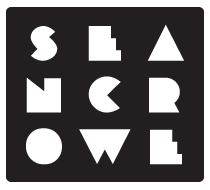I was once part of a product team with some very intelligent people with very strong personalities. Luckily everyone got along quite well, but meetings were frequently heated and made little progress.
I realized people were often making the same point, but they were just using different words. Each discipline has its own set of terminology and it’s easy to use what you’re most comfortable with. People frequently forget that not everyone else knows what they know.
The most challenging conversations were usually about technical topics between developers and product managers. As the designer on the team, I could have just sat there and let them debate in circles. Instead, I jumped into the conversation to help my colleagues come together because eventually all decisions impact the user experience.
I think it’s fair to say designers have an innate ability to organize bits of information into a coherent picture. That’s a key part of our job. I believe we can take that same skill and apply it to rogue meetings.
So even if you aren’t leading the meeting, I encourage you to help facilitate these conversations and bring your colleagues together. In this article I’ll describe a few techniques to help you get started: paraphrase, make it visual, and park it.
Paraphrase
In my past life as a design consultant, my mentor Brendan Reynolds, taught me the value of good communication and introduced me to the concept of active listening. This communication technique requires you to “fully concentrate, understand, respond and then remember what is being said.’’
Part of active listening is to paraphrase what you just heard back to the person talking. This can help show the other person that you’ve understood them, and also allows for any adjustments to be part of the continued conversation.
Paraphrasing doesn’t mean repeating their words back at them, but rather using your own words to describe your understanding.
This is an opportunity to develop shared understanding. By using neutral terms or clarifying existing terms, you can make sure that everyone in the room has a similar thing in their heads.
When those meetings started down a rabbit hole of despair, it was helpful to say something like:
“Hey folks, I just want to make sure I understand where we’re at.
What I’m hearing so far is {perspective A} and also {perspective B}. Couldn’t we also describe that as {shared point}?
Is that right?”
It’s surprisingly simple and it has zero downsides. The best case scenario is that you’ve redirected the conversation and group toward a decision. Worst case is that the group has a better understanding of the two perspectives. In the end, both are beneficial.
Make it visual
Sometimes paraphrasing isn’t enough to help the group come to a shared understanding.
If you sense a meeting starting to get misaligned, the next thing I’d attempt is to make it visual. Always have a stack of Post-Its and a Sharpie on you.
Break out the Post-It notes, and announce to everyone what you’re about to do. This makes them part of the meeting and not just your own personal stash of notes.
“I’m going to start taking notes (show Post-Its), and put them up here for us to refer to”.
Put the Post-Its up on a whiteboard or wall everyone can get to. I’ve found that people will suddenly start gravitating to the Post-Its and pointing to them as they talk.
Post-Its work better here than writing on a whiteboard because you can move them around. As the conversation goes on, you or the team may naturally start grouping related notes or literally draw connections between them.
This also puts the terminology in front of people, instead of just being something in their mind. The physical aspect often helps others feel more comfortable asking questions about what it means and its involvement in the conversation.
Park it
Another way meetings go rogue are through tangents. There are a lot of different interconnected pieces to a digital product and it’s easy to get distracted.
The team I described earlier loved going off on tangents. At the time there were a lot of moving parts, so everything felt important. After a while, I thought I could help us stay focused by introducing a ‘parking lot’.
You can do this by acknowledging the validity of the tangent and identify it as an item for the team to follow-up on later. It often helps to make it visual and create an actual ‘parking lot’ space on a whiteboard.
At the end of the meeting, the team can either take a photo or quickly grab any Post-Its as follow up items.
You got this
Implementing these techniques may feel awkward at first, depending on your relationship with the people in the meeting. Start with the people you work with day-to-day and see how it goes.
Engaging in this way also shows the team that your ability and role is more than just pushing pixels. It demonstrates you care to contribute to the project as a whole. You may find the team interacts more productively, and sees you as a more integral part of the decision-making process.
When you notice a meeting decaying, don’t just sit on the sidelines — use your abilities to help your colleagues. It’s worth doing even when you’re not directly responsible for the outcomes. In the end, all decisions flow downstream and impact the user.
So step up, apply your design skills, and get ready to help guide the group to a shared understanding.




